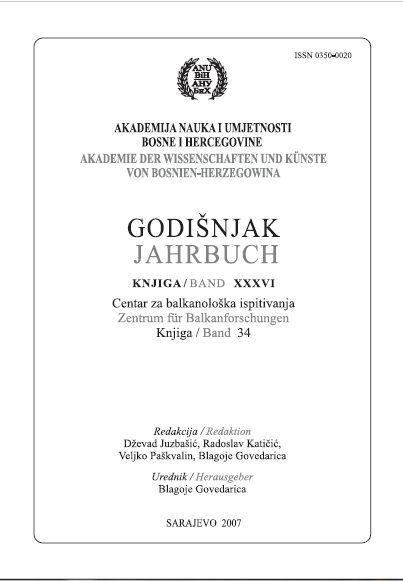Srebrni orans s Garduna
The silver orans from Gardun
Author(s): Ante MiloševićSubject(s): Archaeology, Cultural history, Visual Arts, Ethnohistory
Published by: Akademija Nauka i Umjetnosti Bosne i Hercegovine
Keywords: Silver orans; Gardun; Archeology;
Summary/Abstract: A silver statue of beardless and barefoot men in a pray posture of orans (height 5.6 cm) was found on Gardun (ant. Tilurium) during the 19th century and bought for the Archeological museum in Split. L. Jelić reported this finding for the first time in 1894 and suggested that the statue is a proof of an early devotion of the Christian martyrs St. Vanentius or St. Anastasius from Salona. He was led by the civilian garment of the statue (light shirt with sleeves and tunic). Long after these observations were made by Jelić, the orans from Gardun was not the focus of expert interest. However, it has been recently reported that this statue does not belong to the early-Christianity period because it does not have any characteristics that would mark it at as such. A remark that the representation of a human figure with spread arms in the pray posture does not have an exclusively Christian character is justified, because such iconographic motifs were known much before Christianity in the history of mankind. It is suggested, therefore, that the statue from Gardun represents some pagan priest of ital or, more specifically, etruscan origin. The support for such statement comes from the fact that a significant number of VII. legion solders, that were stationed in the military camp on Tilurium in the middle of the 1st century, were directly from the middle part of Apennine peninsula. Along with these thoughts, the silver orans from Gardun should be dated in the middle of the 1st century, which is hardly acceptable according to its style distinctions.
Journal: Godišnjak Centra za balkanološka ispitivanja
- Issue Year: 2007
- Issue No: 36
- Page Range: 169-180
- Page Count: 12
- Language: Bosnian

